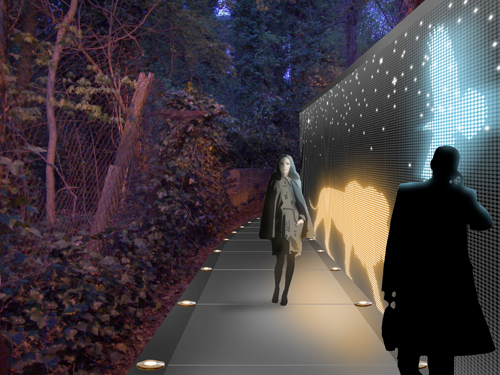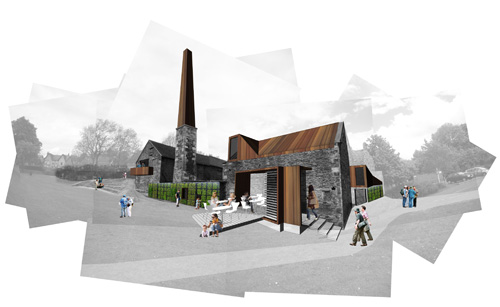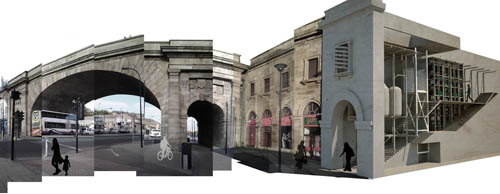
On a recent visit to Sheffield, Jarvis Cocker remarked there were now a mere handful of buildings on the city’s skyline he recognised, such has been the irrepressible pace of urban regeneration. Yet despite a rash of new builds standing alongside Sheffield’s venerable historic fabric, there remains much crumbling industrial architecture, scrubby patches of waste ground and portions of disenfranchised urban sprawl. It was these pockets of potential that the Royal Institute of British Architecture asked people to reimagine for their competition Forgotten Spaces.
Challenging artists, architects, designers, students and enthusiastic amateurs to transform overlooked areas of Sheffield into creative community spaces, RIBA, supported by Sheffield Hallam University, offered a prize of £5000 for the best idea. Of the 60 entrants, the 19 short listed ideas can currently be seen in an exhibition at the Crucible Theatre.
On Monday a distinguished panel of judges lead by David Bickle, director of London-based architectural practice Hawkins Brown – currently redeveloping Park Hill – announced the winners. The five projects which received ‘highly commended’ reflected the breadth of the entries. Bringing the seaside to Sheffield was Life is a beach by Ark D M Team; Pigs, Bees & Bells by David Britch, Eamonn Canniffe and Stephen Martlew imagines a city centre rural idyll; Is the River Really Beautiful…? by John Harrison and Chantelle Stewart reinvigorated a forgotten waterway; The Coo-op by Evans Vettori Architects brought pigeons and homeless people together in a community initiative and in another bit of pigeon fancying Simon Gedye and Keith Hayman made a statement with Cuthbert Bank / Walkley Flying Club.
But the top three prizes showed the most convincing combination of creative inspiration and practical flair. Doma Architects took bronze by turning a derelict Millhouses mill into a foody paradise complete with kitchen garden, restaurant and cookery school in Food for Thought. In second place Oliver Peach’s Wicker Spice mixed historical ingredients with a diverse community to create a spice oil distillery in a redundant stairwell in the Wicker Arches.
But the night belonged to first prize winner Chris Paterson, who showed himself to be a magic realist with his proposal Guiding Lights for Sharrow’s Frog Walk. Unaffectionately known as ‘mugger’s alley’ this shortcut, while convenient, is dark and dangerous at night. Inspired by the Narnia-like lamppost at one end of the walk, Chris envisaged an LED wall along one sit of the path which would generate an avatar – a stag, a bear, perhaps a lion – as each new person entered the ginnel. Like a demon from the His Dark Materials trilogy this luminous creature would guide the walker safely along the path while oncoming walkers would be made visible by their own avatars approaching. For a personalized experience mobile technology would allow walkers to choose the species and colour of their guide. A beautifully simple idea, both enchanting and useful.
Without financial and civic backing of course these ideas remain just that. We can only hope that some developer will bring Chris Paterson’s avatars to life.
You can learn more about Forgotten Spaces here.
You can visit the exhibition of all the shortlisted proposals in the foyer of the Crucible Theatre until 8 October.


The winners scheme is a great idea, it would be great if it got funding to be built.
I’d love it to be run in other cities too, with a guarenteed budget for construction, otherwise I’m not sure the point of it as architeccture & urban design etc is about built form we can experience not ideas on paper!